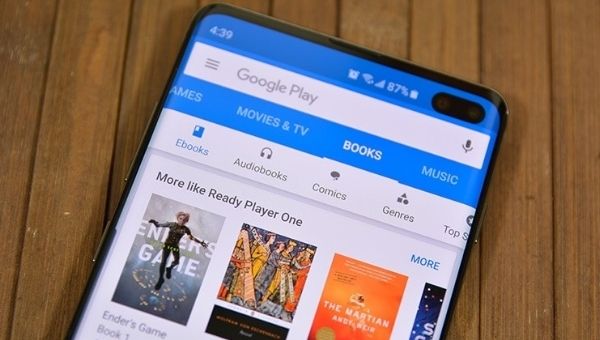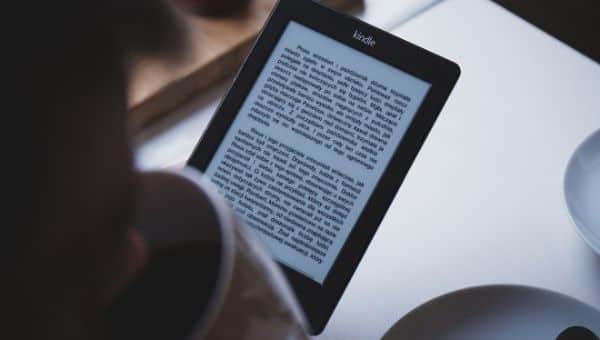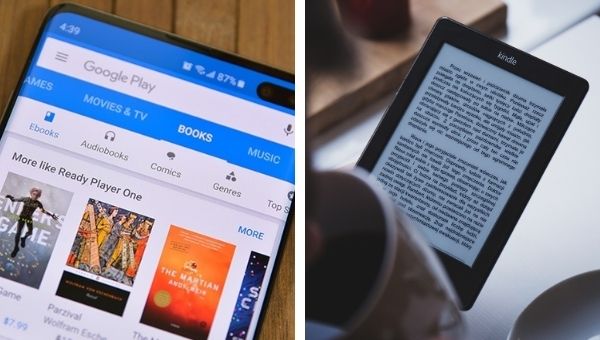Google Play Books and Amazon Kindle Direct Publishing are the two major self-publishing platforms available for writers all over the world today. While they are both great investments and writers should ideally capitalize on both, it’s worthwhile to know the difference between the two. Today we will do total comparison in this Google play books vs Amazon Kindle direct publishing article.
Google Play Books vs Amazon Kindle Direct Publishing:
Number of Readers
The main thing that debut (and experienced) authors strive for is exposure. Visibility and exposure are always on author’s minds. Wherever they decide to publish their books, they need to be assured that their books are reaching the maximum number of people. If authors have a target audience, that makes it even more specific. Comparing Amazon and Google, it is amply clear that Amazon has a wider reach. Not only do they offer superb deals and prices, but also have a strong SEO system that allows readers to access both specific niches and bestsellers. Thus, in terms of number of readers, Amazon steals the show, and Google lags behind.

Percentage of Royalty (and effects of discounted price)
Apart from reach, another major factor writers consider while deciding which platform to publish their books on is money. Even though it may not be the primary motivating factor, it is always at the back of people’s minds. Now, the rates of royalties, especially with discounts differ on Amazon and Google. On Amazon, you can choose to get a 70% royalty for a book priced between 2.99 to 9.99 dollars. Conversely, Google offers a maximum of 52% royalty for the same price range. And beyond that, royalties reduce to 35% only.
However, another thing is to be considered – discounts. In this respect Google is better because Google still pays you the exact same royalty even though the price for buyers may be discounted. So your product priced at 4.99 $ may be sold at 2.99 $ but you’ll still get royalty on 4.99$. This is the best of both worlds because the low price will bring more readers in due to forces of market demand and supply. However, payment is at the original price.
Marketing and Exposure
When it comes to digital publishing, digital marketing plays a crucial role. No matter how well you yourself market the book, the marketing strategies and their efficiency of the platform itself matter. For example, the website of Amazon is not very elegant looking, but they colours they use are colours that the colour blind can see. This broadens their exposure in terms of the influence of marketing due to use of colours. However, if you plan to promote a book by releasing it to be free of cost for some limited periods of time, Google Play offers a better and easier platform. Meanwhile, you need to sign up for KDP select to run promotions on Amazon, and then too for a limited period. So, the ease of marketing and authorial flexibility differs on both platforms.

Formatting
On Google Books, the only formats available are PDF and EPUB. All other formatting media were available till 2013, but now this has changed. However, Amazon is even more restrictive, it offers only the EPUB format. Since many people like to download pdfs and watch at leisure, Amazon may suffer a setback in this respect. Additionally, the image formatting may differ on both platforms.
Genres of books available
Google play books, due to its formatting, makes it a great platform for academic readers. Thus, if you write niche non fiction or intense literary fiction, this might be the place for you. Due to the market demographics that Amazon caters to, they have more mainstream books that appeal to a lot of people. As a result, the bestseller lists on the two platforms tend to be different.
Also Read: 7 Books That Can Teach You Amazing Salesman Qualities



